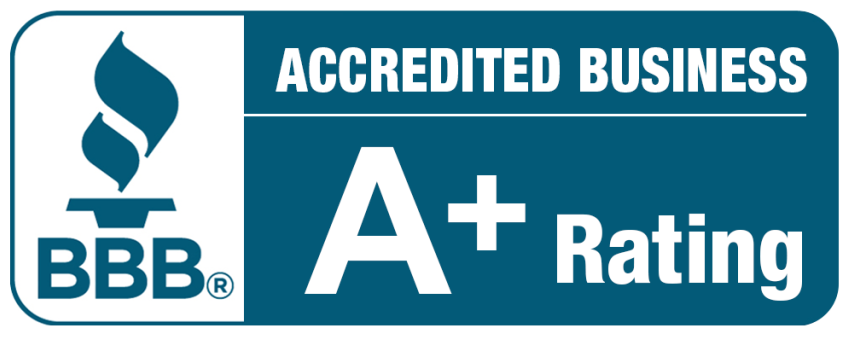Just consider a living space where the temperature is always ideal and there are no cold areas in the room or radiators blowing cold air. A home where the heating and cooling system is almost unseen, allowing more space and potential for home design. This is the promise of radiant floor heating and cooling systems, a technology that is quickly being adopted in North America.
Radiant heat is where your home is warmed from below through the use of infrared radiation. Unlike the other types of forced air systems that work by heating the air, radiant heat warms the objects and people. This makes for better dispersion and circulation of heat, thus enhancing comfort and possibly reducing energy consumption.
If you have ever wondered if radiant floor heating and cooling would work for you, give Morehart AC and Heating a call. As experts in HVAC solutions, we will:
- provide you with information on what radiant systems are, how they operate, and what kinds there are
- discuss the advantages and disadvantages of the system to assist you in making the right choice about this new home comfort technology.
What is Radiant Heating, and How Does it Work?
Contrary to the more traditional systems that warm the air (HVACs and the duct system, mini-split ACs, dedicated heating systems, things like those), radiant heat warms the objects and people in its path. This fundamental difference in heat transfer is critical to the working knowledge of how radiant floor heating is different and why it is more comfortable and efficient.
Now, let’s get a bit more technical.
The science of radiant heat stems from the theory of heat transfer. In cases where objects have different temperatures, heat always transfers from the warmer object to the cooler one. Radiant floor heating systems utilize this concept through heating elements installed below the floor. These elements radiate heat which warms the floor, and through radiation, warms the people and furniture in the room. This is advantageous compared to forced-air systems that require grills or multiple vents to ensure even circulation of warm air.
Radiant floor heating systems come in two major categories. Let’s look deeper into them:
- Hydronic radiant floor heating
- Electric radiant floor heating
Types of Radiant Floor Systems
We introduced these systems in the last section. Now, let’s see more about them:
Hydronic Radiant Floor Heating
At the heart of hydronic heating is a network of durable pipes, usually PEX (cross-linked polyethylene) installed in the floor. A boiler or water heater heats the water and this hot water is then pumped through the tubing with the help of pumps and valves. The heat from the water gets distributed through the floor and maintains equal temperature throughout. Some advanced hydronic systems may also include zoned control options, which allow you to set different temperatures for separate rooms in the house.
Hydronic systems are known to be energy efficient, especially when they are used with condensing boilers or water heat pumps. These heat sources get thermal energy from the air or the ground and are much more energy efficient than traditional furnaces.
Electric Radiant Floor Heating
Electric systems involve the use of electric heating cables or mats that are placed beneath the floor. These cables generate heat from electrical energy and emit it vertically. Another disadvantage of electric systems is that although they are easier to install and may be used for smaller areas or zones only, they have higher operational costs than hydronic systems because of the cost of electricity.
Electric systems are easier to install and can be cheaper initially than hydronic systems but in the long run, the cost of electricity is much higher. However, the recent innovations in electric heating including smart thermostats and programmable controls can assist in minimizing the energy cost.
We at Morehart AC can help you decide whether to go for an electric or hydronic system depending on your requirements, preference, and pocket.
Radiant Floor Cooling (and the Importance of Dew Point)
Although the most common use for radiant floor heating, many people are shocked to discover that radiant systems can also be used for cooling. The principle is similar: instead of pumping hot water through the tubing or panels located below the floor, the system pumps cool water. This chilled water circulates in the room and removes heat from the room thus providing a constant and cool environment.
However, there’s an important factor to consider with radiant cooling: relative humidity.
The dew point is the temperature level at which the air is fully absorbed with moisture and forms droplets of water. Condensation can form if the surface temperature of your radiant floor is below the dew point – this can lead to future moisture issues and possible damage to your floor.
This is why it is important to ensure that the floors used in radiant floor cooling systems are well insulated and that moisture is well controlled. Morehart AC pays much attention to the design and installation of these systems to make certain that the surface temperature of your floor is always above the dew point even during the humid period.
Radiant floor cooling, when installed and managed correctly, can be an effective and comfortable approach to cooling that is different from air conditioning systems that make noise and cause drafts. It is especially suitable for commercial structures and new constructions since the system can be incorporated into the structure easily.
The Benefits of Radiant Floor Heating and Cooling
Radiant floor heating and cooling offers a ton of benefits, from comfort to cost savings. Let’s break down why it’s becoming a popular choice for homeowners:
Comfort and Energy Efficiency
First of all, with radiant heating systems, heat is emitted evenly over your entire floor. There are no more cold spots or drafts that give you a chill from the floor up. This is because radiant heat warms objects and people, unlike the air as is the case with most conventional central forced-air systems with large radiators. This means that you can adjust your thermostat to a lower temperature and still be comfortable, which means you can save energy and money on heating bills.
Health and Indoor Air Quality
Radiant heating is also healthy for you and good for your indoor air quality. Since there is no air circulation, it minimizes the circulation of dust, pollen, and other particles that cause allergies or respiratory problems. Moreover, radiant heat systems are effective in regulating humidity and thus will improve your home’s comfort during the dry months of the year.
Aesthetics and Space-Saving
No more radiators or those obtrusive air vents! Radiant heating systems have no visible heating components; they are installed beneath the floor. This gives you more flexibility with your interior design and also saves floor space. You can finally put that couch where you’ve always wanted it without worrying about blocking a vent.
Considerations and Potential Drawbacks
Radiant floor heating and cooling systems offer a bunch of advantages, but it’s essential to weigh the potential drawbacks and considerations before making a decision. Let’s take a look:
Cost
One of the first areas to look at is the initial expense. Radiant systems in most cases are more expensive to install in comparison to conventional HVAC systems. This is because they require a more complicated approach in installation since tubing or heating elements have to be incorporated into the floor. Furthermore, extra materials such as PEX tubing, manifolds, and controls will also contribute to the overall cost.
But, one has to look at the bigger picture at times. Radiant systems are known for their energy efficiency, which can lead to significant cost savings over time. The even heat distribution and ability to operate at lower temperatures can translate into reduced energy bills, especially in well-insulated homes. Morehart AC can provide you with a detailed cost analysis, taking into account factors like the size of your home, the type of system, and your energy usage patterns. We also offer financing options to help make radiant systems more affordable and accessible.
Installation
The other important aspect that should be considered is the way the equipment will be installed. Radiant floor systems are most often combined with new construction or with significant remodeling works when floors are being replaced. It is not impossible to install radiant heating in existing homes, but it may be more invasive and you may have to alter the existing floor coverings.
For efficiency and durability, we recommend that you get professional help from adequate technicians like Morehart AC and Heating. We have the experience and understanding of how to accommodate a customer’s needs in designing and installing radiant systems that work with the construction of the home.
Floor Coverings
Another factor that may affect the efficiency of radiant heating is the type of floor covering chosen. Certain materials such as ceramic tile, stone, and concrete are good conductors of heat and are compatible with radiant systems. Engineered wood and laminate flooring may also be used, although it is recommended to use the products that are created for use with radiant heat. Carpet, however, may provide insulation and may decrease the effectiveness of the system. Consult with Morehart AC for the best flooring types for your radiant system to maximize heat transfer and comfort.
Response Time
Radiant floor systems are generally slower in terms of response than forced-air systems. This implies that it will take some time for your home to warm up or cool down depending on what you are setting on the thermostat. Radiant systems may not be as effective if you want to be able to easily alter the temperature in your home. Nonetheless, the steady, uniform heat of radiant systems is worth the relatively slower response time among homeowners.
Maintenance and Repairs
Radiant systems in general are easier to maintain than forced-air systems since there are no filters to change and no ducts to clean. However, some level of maintenance is still required, for instance, to check the pressure in hydronic systems or inspect the electrical connections in electric systems. Morehart AC provides maintenance services to guarantee the functionality of your radiant system and identify problems that need to be solved.
Although repairs are not very frequent with radiant systems, when they occur, they may take longer and be more expensive due to the in-floor installation. When selecting an installer, you should consider finding a company like Morehart AC and Heating that will continue to serve your radiant system and make sure it is running smoothly for many years to come.
Is Radiant Floor Heating and Cooling Right for You?
Well, you have now gained a lot of knowledge on radiant floor heating and cooling systems; the pros, the cons, and the cozy. Now comes the big question: Is it the right choice for your home? Let’s break it down to help you decide:
Pros and Cons Recap
On the plus side, radiant systems provide comfort, even heat distribution, energy efficiency, and better indoor air quality. They are also noiseless, unobtrusive, and can work as both a heater and an air conditioner.
However, there are some disadvantages which should be taken into consideration. Radiant systems often cost more initially and can be more difficult to install. They also have a slower response time and are less suitable for certain floor coverings.
Your Checklist
To figure out if radiant floor heating and cooling is a good fit for you, consider the following:
- Type of home
Are you in the process of constructing a new house or are you carrying out a remodeling project? Radiant systems are easier to install in new constructions but can also be installed in existing structures albeit with some changes.
- Budget and energy goals
Radiant systems are more costly initially but can be more economical in the long run. Think about how much money you want to spend now on a more effective and comfortable system.
- Preferred floor coverings
Certain types of floorings, like ceramic tile floors and stone tile floors, are ideal for installation with radiant heat. If you want to choose carpet, you should know that it is not that efficient.
- Comfort and health priorities
Radiant systems are recommended for those who appreciate steady comfort, equal temperature distribution, and better air quality. They are also suitable for customers who have allergies or respiratory issues.
Still not sure? That’s okay! The only way to know whether radiant floor heating and cooling is for you is to consult professionals. Morehart AC provides consultations for individual needs and preferences, as well as to determine the readiness of the house for the installation of radiant systems. We will advise you based on our professional experience and ensure that you make the right choice for you, comfortably and within your budget.
Embrace the Future of Home Comfort
Radiant floor heating and cooling systems offer a compelling blend of comfort, efficiency, and health benefits. While they may require a higher initial investment, the long-term advantages and potential cost savings make them a worthwhile consideration for many homeowners.
If you’re intrigued by the idea of a cozy, evenly heated home with improved indoor air quality, Morehart AC and Heating is your trusted partner. Our team of experts specializes in designing, installing, and maintaining radiant systems tailored to your specific needs and preferences. We’ll guide you through the entire process, from selecting the right system to ensuring optimal performance for years to come.
Ready to explore the possibilities of radiant floor heating and cooling for your home? Contact us today for a personalized consultation. Let us help you create a comfortable and efficient living space that you’ll love coming home to.




